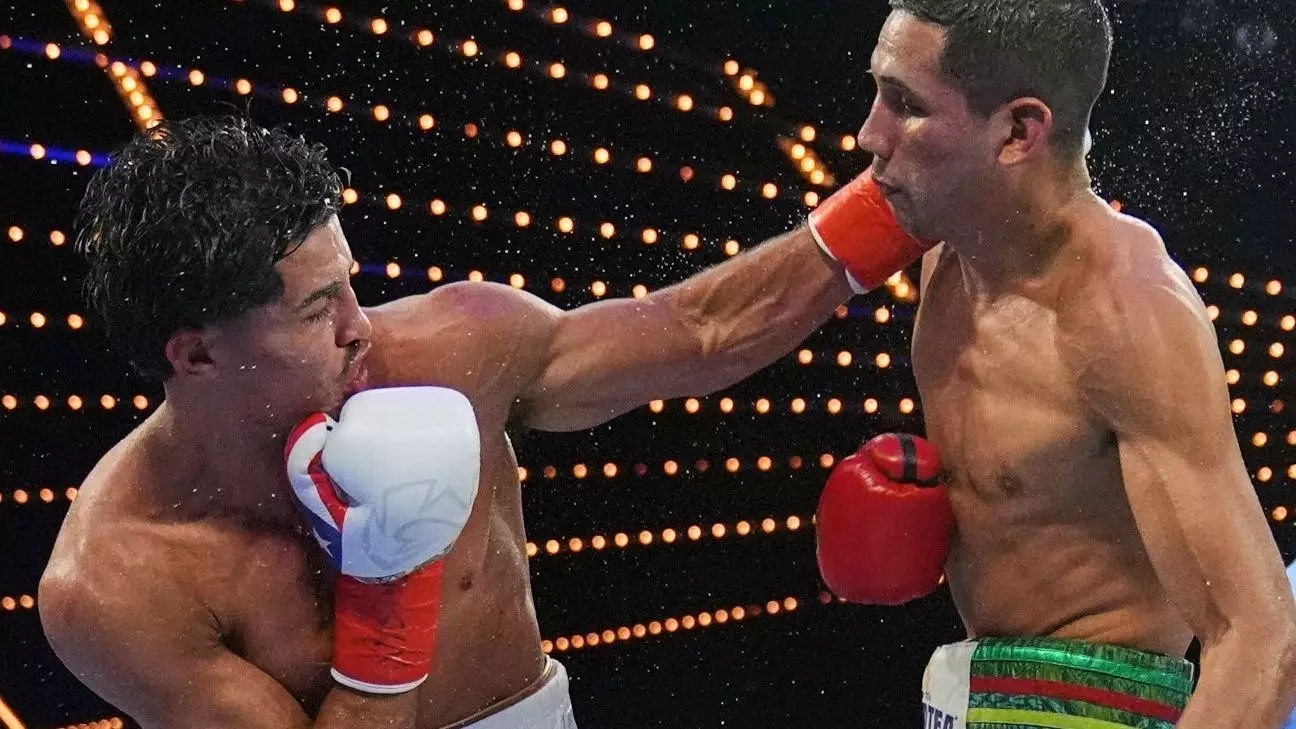Xander Zayas’s recent victory is more than just another win on his record; it’s a bold proclamation that age and experience are no longer the sole arbiters of boxing dominance. At only 22, Zayas has shattered the conventional wisdom that you must wait your turn or log decades in the ring before claiming recognition at the sport’s highest levels. His decision victory at Madison Square Garden—an iconic venue whose walls resonate with decades of boxing history—symbolizes a generational change that could shake the very foundation of the sport.
What makes Zayas’s achievement particularly compelling is how it spotlights Puerto Rico’s ongoing cultural influence within boxing’s American landscape. Historically, Puerto Rican fighters have fought fiercely for recognition, fueled by a blend of indomitable spirit and deep-rooted pride. Zayas embodies this legacy yet injects a new energy—one that challenges the old guard and suggests the sport is shifting toward a more youthful, versatile paradigm. In a way, his rise questions the durability of traditional power hierarchies and demands reconsideration of what the future of boxing should look like.
The Power Struggle in the Ring and Beyond
The undercurrents of the Zayas victory extend beyond the individual athlete; they are reflective of a broader political and cultural tension within boxing. The sport has long been a battleground for national pride, with fighters serving as symbols of their heritage on the global stage. Zayas’s victory for Puerto Rico is not merely personal; it signals a potent assertion of regional influence, challenging the dominance of fighters from other regions, especially Mexico and the United States. This territorial reclaiming in the ring parallels broader social conversations about identity and representation.
Meanwhile, the rise of fighters like Zayas complicates the existing power structures within boxing promotions and governing bodies. The fight for recognition, titles, and lucrative opportunities often aligns with promotional backing and geopolitical influence. Young fighters pushing through these barriers threaten to alter the traditional hierarchies—favoring talent and determination over legacy and longevity. This shift could invigorate the sport with fresh competition but also provoke resistance from those invested in maintaining an old status quo.
The Implications of Younger Champions and Shifting Rankings
Zayas’s emergence as the youngest current world champion is a wake-up call for seasoned contenders and promoters alike. It suggests a new era where youth and agility eclipses the grit and stamina of fighters who have long held the spotlight. This isn’t just about talent; it’s about changing perceptions regarding what it takes to succeed at the highest level.
The trend is apparent across weight classes, with new champions like Brian Norman Jr. and Bruce Carrington among the youngest in their divisions. These fighters are reshaping rankings, challenging the narratives that once dictated boxing’s timelines. Their victories indicate not just individual brilliance but also a possible shift toward a more meritocratic system where opportunity favors those willing to take risks early on, rather than waiting for decades of experience to accrue.
However, this rapid ascent isn’t without risks. The hunger and recklessness of youth can sometimes lead to unpredictable outcomes, and established fighters may feel threatened—further fueling tensions within the sport’s hierarchy. The potential for new rivalries to ignite and old rivalries to reignite makes the current landscape vividly dynamic but also dangerously volatile.
The Future of Boxing: Promise or Peril?
The recent fights in New York reveal a sport at a crossroads—standing on the brink of transformation yet fraught with resistance. The rise of young champions embodies the promise of renewal, diversity, and a more inclusive competitive environment. Yet, it also risks fracturing existing loyalties and intensifying rivalries that could threaten the sport’s cohesion.
Boxing’s history has taught us that change often stirs discomfort among traditionalists, but it also offers an opportunity to evolve. In a society increasingly valuing meritocracy and fresh perspectives, the sport’s embrace of its rising stars could invigorate its future or, conversely, deepen divisions if not managed with strategic foresight. If the sport is to thrive in this new era, it must cultivate an environment where young talent is celebrated without sidelining the veteran fighters whose experiences still hold weight.
The current developments suggest that boxing is no longer just a reflection of physical prowess but a mirror of societal shifts—where questions of identity, opportunity, and power continue to unfold both inside and outside the ring.

Leave a Reply